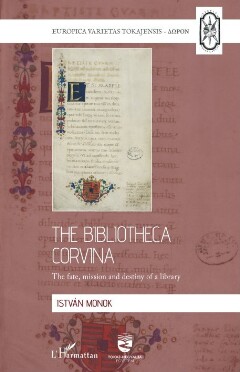Seite 125 [125]
in 1976 in Hungarian, " in 1978 in German," and in 1981 in English*” and in
Polish.*” The third edition (again with expanded content) was published in 1981
in Hungarian," and in 1982 in French"" and German."
In 1977, Tibor Klaniczay founded the International Association for Hungarian
Studies, of which its ars poetic became research work connected to the dialogue
between Hungarian and Western academic workshops. It was momentous when
Lower Austria dedicated its annual exhibition (Niederösterreich, Jahresausstellung)
in 1982 in Schallaburg to the Hungarian Renaissance of the time of Matthias, in
particular the Corvina Library.’ Most of this exhibited material was displayed a
year later in Budapest, at the Hungarian National Gallery." The academic inter¬
est, and the state funding, made it possible to publish the reconstruction of the
library"? of Johannes de Zredna (János Vitéz, Archbishop of Esztergom, 1408?¬
1472), as pieces of it were also included in the Corvina. These years were a turning
point in the research of the Hunyadi and Jagello eras, when attention turned to
the fact that the period between 1490 and 1526 was not one of general decay, but
of the imitation of the cultural patterns of the Matthias Era by the noble and high
priestly courts.°*’ This work was facilitated by the atmosphere that characterised
these years: Renaissance scholars met on an annual basis, with all the experts of
the period present, from art historians through legal historians to book historians.
Thus the National Széchényi Library was able to hold a grand exhibition to
mark the 500th anniversary of the death of Matthias Hunyadi, which could take
place after the political changes of 1989.*** At this same time, a new, revised ver¬
sion of the corvinas, accepted as authentic by the Csapodi couple, was published.
Ihe region and Hungary were at the centre of international political attention
at the time, and as a result, Western research institutes, closed out of convenience
until then, suddenly became more interested in the issue. Perhaps as a consequence
of this, the Royal Library of Albert I of Belgium published a special volume on
the Matthias Missale,°*° the Austrian National Library organised an exhibition of
573 CsaApopI-CsAPODINÉ GÂARDONY1, Bibl. Corviniana, 1976.
Csaropi-CsAPODINÉ GARDONY1, Bibl. Corviniana, 1978.
Csaropi-CsAPODINÉ GÂRDONY1, Bibl. Corviniana, 1981.
CsapoDi-CsAPODINÉ GÂRDONY1, Bibl. Corviniana, 1981a.
CsaroDi-CsAPODINÉ GAÂRDONYI, Bibl. Corviniana, 1981b.
CsaPpoDI-CsAPoDINE GARDONYI, Bibl. Corviniana, 1982.
Csaropi-CsAPODINÉ GARDONY1, Bibl. Corviniana, 1982.
580 Kranıczay T.-Tôrôk-STANGLER, hrsg., Schallaburg ’82..., 1982.
581 "TÖRÖK Gy., ed., Mátyás király. .., 1983.
582 CsapopINE GARDonv! 1984.
Mixó 2009.
FöLDEsı-CsAaPoDI-CsAPoDINE GARDONYI-Karsay, Bibl. Corviniana, 1990.; in English: FöLDeEsı¬
CsAPoDI-CsAPoDINE GARDONYI-Karsay, Bibl. Corviniana, 1990a.; URBAN 1990.
Csapopi-CsAPoDINÉ GAÂRDONYI, Bibl. Corviniana, 1990.
586 HoremMans 1993.; HoreMaAns 1993a.
574
575
576
577
57:
æ
579
S
58.
3
584
585
123

